VI. Athos during the first two centuries of Turkish rule
1. Life on the Holy mountain in the second half of the 15th century and during the 16th century
During the period of flux described in the previous chapter, there was an unimpeded movement of monks to Mount Athos from all over south-east Europe. The new-comers comprised Greeks, Slavs, Albanians, Vlachs, Moldavians, and even Russians. This province of Southern Macedonia constituted the most important centre of the Orthodox faith and one of the foremost seats of Hellenism during the years of Turkish occupation; and as such it deserves separate treatment in our work. There is, however, an unfortunate absence of any detailed, all-embracing work on this period, which by making the widest possible use of archives from that era (documents which are often inaccessible to the researcher), would delve into the very essence of monastic life. Such a work should cover the spiritual strivings of the monks, and appreciate their contribution to the preservation of education both secular and sacred.
1. The earliest and most interesting descriptions we have of the Holy mountain are written by Russian pilgrims. These accounts, in which truth is often mixed up with myth, tell us in great detail of the condition and the history of the monasteries, of their 'metochia' (dependencies) and farms in Chalcidice and the neighbourhood of Thessalonica, of the treasures which they conceal, the rich and multifarious gifts made by Byzantine kings, the holy relics and their miraculous properties, and of
165
![]()
numerous other interesting matters which together contribute to the devoutly religious atmosphere of the period [1].
At the end of the 15th century, the Russian pilgrim Isaiah relates that the monks support themselves with various kinds of work including the cultivation of their vineyards. They buy bread from ships that put in at the small anchorages of Athos. The Sultan rebukes the monks of the Holy Mountain, Isaiah goes on to say, for harbouring fugitives and making them monks [2]. He also tells us that nearly half the monasteries are Slav or Albanian. As Serbian he instances Docheiariou (see fig. 55),
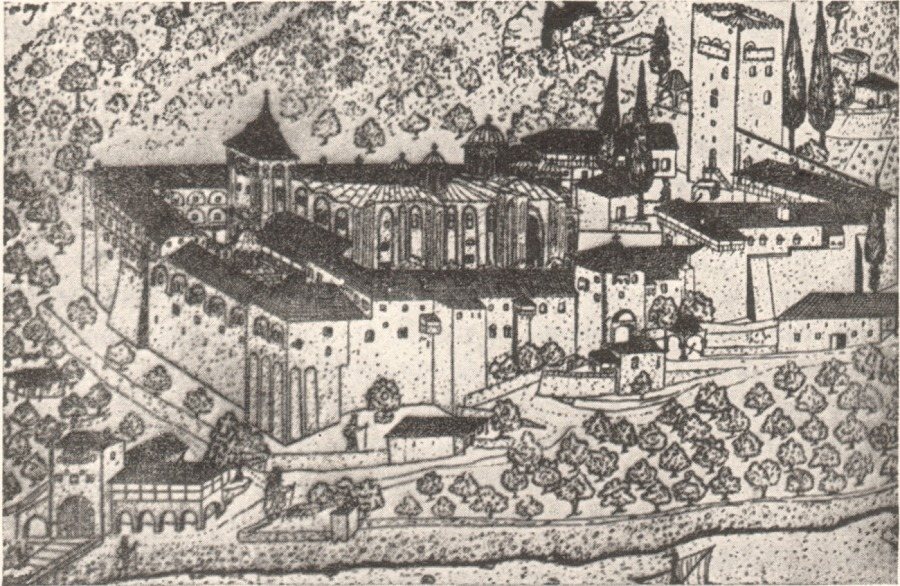
Fig. 55. The monastery of Docheiariou from a sketch of Barskij.
(Beylié, L'habitation Byzantine, p. 69)
Grigoriou, Ayiou Pavlou, a monastery near Ayiou Pavlou and dedicated to St. John the Theologian (he no doubt means the monastery of Ayiou Dionysiou), and Chilandariou. Panteleïmon (fig. 56) is Russian, Simonopetra (see fig. 57) is Bulgarian, and Karakallou and Philotheou are Albanian.
1. See the text in the book of B. Khitrovo, Itinéraires russes en Orient, Geneva 1889. Α critical examination of the information they give would be useful. The Russian monk Isaiah from Chilandariou writes in 1489: «...personne n'ose entreprendre le voyage de la Sainte Montagne sans un écrit de l'empereur» (p. 259).
2. Khitrovo, ibid., p. 259.
166
![]()
Zographou, Kastamonitou (see fig. 58), Xeropotamou, Koutloumousiou, Xenophontos, Iveron and Protaton he mentions without any designation; while Lavra, Vatopedi (see fig. 59), Pantokratoros, and Stavronikita (which had been recently founded by the patriarch Jeremiah I) he names specifically as being Greek (see map 6) [1]. I think that his information is reliable and witnesses to the unimpeded circulation of the enslaved Christian peoples within the confines of the Ottoman empire. The influx of Slavs and Albanians (most probably Northern Epirotes) into northern
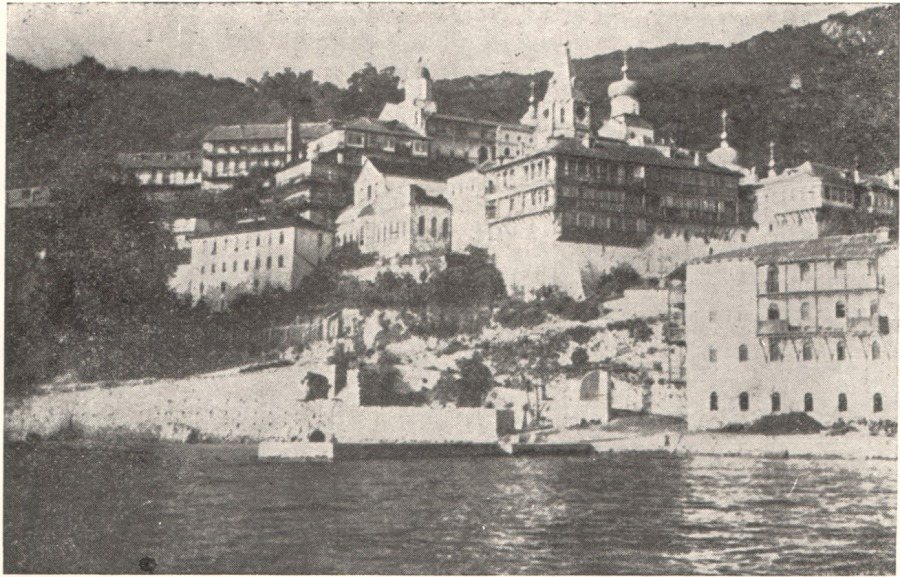
Fig. 56. The Monastery of St. Panteleïmon.
(Photo S. Stergiopoulos)
Greece, Macedonia and Thrace was a marked feature, which was not limited to agriculturalists but included monks as well. My opinion is corroborated by two documents of the 'Congregation' (Σύναξις); the one, dated 1399, is signed in Slav characters alone by the representatives of Chilandariou and Dionysiou (although the era of Dušan's and Uğlieša's state — so favourable for the Slavs — had passed [2]); the other, dated 1505 (contemporary, therefore, with the aforementioned Russian pilgrim, Isaiah), is signed by 18 representatives, 11 of whom have written
1. Khitrovo, Itinéraires russes en Orient, pp. 160-164.
2. See details in Ostrogorskij, The Serbian state of Sérres, p. 115.
167
![]()
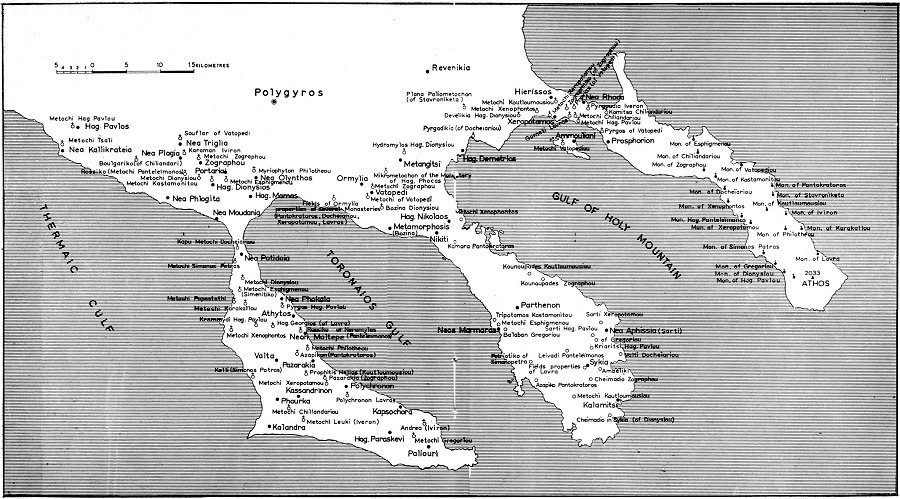
Map 6. Monastic estates in Chalcidice pertaining to Mount Athos. [[ large map ]]
168&169
![]()
their signatures in Slav characters [1]. This means that in the 15th century — and especially after the Fall — the monasteries of Athos contained a large number of Slav monks, the majority of whom were Serbs. This is just one clear illustration of the fact that for the Greek lands of Macedonia the danger of being swamped by Slavs was actually greater when the latter were migrating peacefully during the Turkish occupation, than when they were making their incursions in the 14th century. Despite the gradual deadening of national consciousness amongst the Bal-
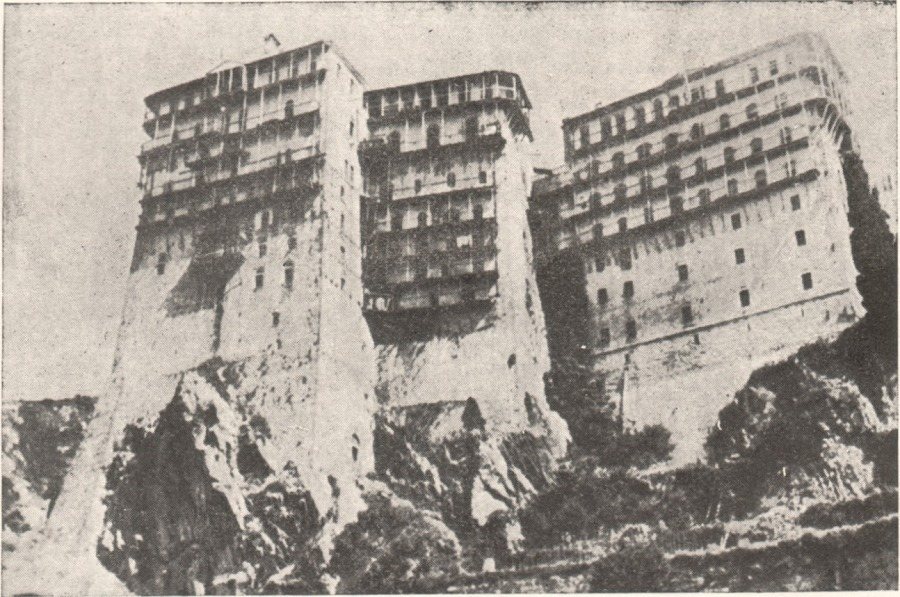
Fig. 57. The Monastery of Simonos Petra.
(Photo S. Stergiopoulos)
kan peoples, this state of affairs could not remain unnoticed by a number of Greeks intellectuals. Indeed, a reaction on the part of certain Greek monks against the 'slavicising' of the monasteries may be observed from as early as the beginning of the 16th century, if we can judge from various indications such as the episode of St. Dionysius, mentioned in the preceeding chapter [2]. Now thoroughly alarmed, the Greeks were beginning to defend their interests.
1. See the archim. Chr. Ktenas, Ὁ πρῶτος τοῦ Ἁγ. Ὄρους Ἄθω καὶ ἡ «Μεγάλη Μέση» ἢ «Σύναξις», ΕΕΒΣ 6 (1929) 275-278.
2. See page 127 in this book.
170
![]()
In this context, there are some details communicated by the abbot of the monastery of Chilandariou, Païsios, to Makarios, the Metropolitan of Russia, which are worth noting. There were, he says, no laymen living on the Holy Mountain, not even young children studying to be novices. The Bishop of Athos resided at Hierissos [1]. In the neighbourhood of Thessalonica were areas belonging to the Holy Mountain, where the monasteries' flocks were pastured during the summer. There was other pasturage belonging to the Mountain in the Sérres district, and saffron and cotton were cultivated there also [2].

Fig. 58. The Monastery of Kastamonitou from s sketch of Barskij.
(Beylié, L'habitation Byzantine, p. 69)
Speaking later about the taxes payable by the Athonite society, Païsios writes that they had to keep the real number of monks a secret, from fear of additional taxes. Thus, in the tax registers 4.000 monks are recorded, while in actual fact their number was in the region of 6.000. They were also obliged to pay in cash one-seventh of the value of their yield in wheat, barley, oats, peas, green-vegetables and grapes, but this at twice the reigning market-prices. All products derived from fishing were subject to the same tax. For the larger animals that they
1. Khitrovo, Itinéraires russes, p. 281.
2. Khitrovo, ibid., p. 282.
171
![]()
pastured on the various summer and winter pasturages, they were obliged to pay five Turkish coins (probably akçes) per head; while for the smaller animals, such as sheep and goats, and for every beehive they payed three coins. But this was not the end of their tax burdens; they were subject to a variety of other minor taxes besides [1].
Isaiah's contemporary, Pierre Belon [2], was very much taken by the natural surroundings on the Mountain, and declared that he knew no other place more suited to the monastic life [3].
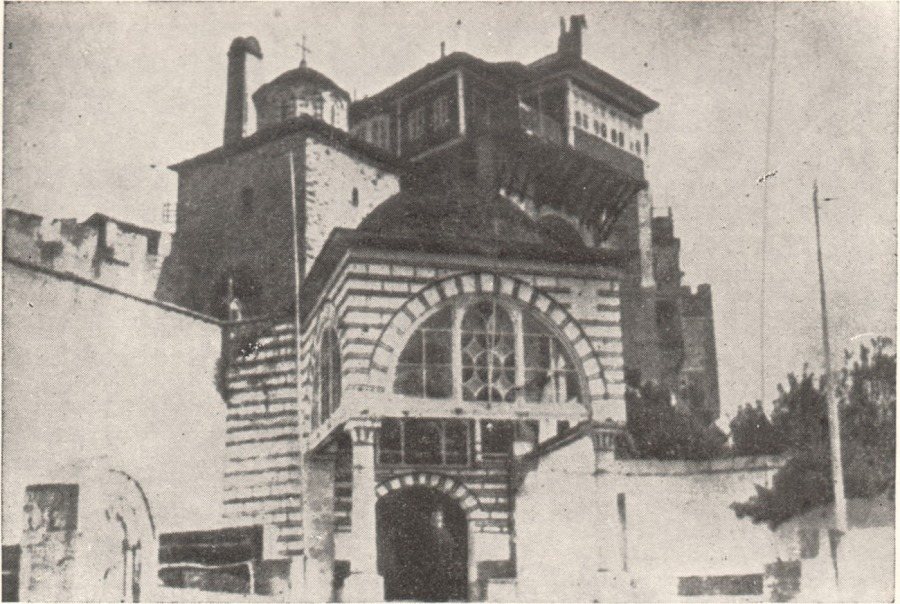
Fig. 59. Entrance to the Monastery of Vatopedi.
(Photo S. Stergiopoulos)
If a man who comes to the Holy Mountain to become a monk possesses private property, Belon goes on to say, this is incorporated into the monastery's effects [4]. However, one unfortunate aspect which he comments on was that the aspirant monks were tonsured usually before they had had the requisite experience, and sent out immediately to undertake the various agricultural jobs with the flocks and herds, or
1. Khitrovo, Itinéraires russes, pp. 279-280.
2. See a favourable criticism on him in Fallmerayer, Schriften und Tagebünher, vol. 2, p. 78.
3. Belon, Observations, p. 39a.
4. Belon, ibid., pp. 38a-38b,
172
![]()
to work in mills, etc. The result was "that their souls would become corrupted" [1].
The 6.000 monks lived in 24 old monasteries, scattered here and there, well-built and fortified with lofty walls to resist the raids of pirates, though the latter did not usually bother them any more than the Turks did [2].
Shabbily clad, the monks trudged to work every morning, taking biscuits and a few onions in a wallet thrown over their shoulders and carrying their tools — hoe, mattock or pruning-hook — in their hands. Some hoed vineyards, others cut fire-wood, and others again made boats. There were those, too, who spun wool or were tailors, shoemakers, builders, carpenters, etc. [3] They made beautiful wooden spoons, back-scratchers, cups, platters decorated in many colours, and other artistic objects [4] — crafts which survive on Athos to this day.
The monks did not eat meat — not even fish — particularly during Lent. They began their meal with raw onions and garlic. Their main dish was olives and split-peas previously soaked. They finished off with rocket and water-cress [5]. As today, they provided free hospitality to visitors. Since the Athonite monks were considered to abide strictly
1. See Od. Lampsidis, Ὁ Παχώμιος Ρουσᾶνος καὶ ὁ βίος τῶν συγχρόνων του, ΕΕΒΣ 13 (1937) 392.
2. Belon, Observations, pp. 34b, 36a-36b. In 1677, Covel, with Belon in mind, gives the same number, but adds that 2.000 were outside the Mountain on 'begging tours' (F. W. Hasluck, The first English Traveller's Account of Athos, BSA 17 (1910-1911) 114). In 1578 Gerlach states that, according to Metrophanes of Véroia, the monks numbered 2.500 (Tagebuch 448): but later on, on pages 459-460, this time basing himself on information derived from the monk Methodius, Gerlach puts them at 6.000, and adds a few details about their organization and their way of life, partilularly that of the hermits, etc. As regards the rare inroads made on Athos by pirates (they demanded only wine and bread), and the fortıfying of the towers, see Hasluck, ibid., p. 124. See also the burning of the monastery of Mylopotamos by pirates in 1527 (Alexander G. Lavriotes, Το Ἅγιον Ὄρος μετὰ τὴν ὀθωμανικὴν κατάκτησιν, ΕΕΒΣ 32 (1963) 157).
3. Belon, ibid., pp. 35a-35b. See also pp. 38a-38b. According to a Jewish source of 1538, monks of the Holy Mountain together with Frankish knights used to plunder and annihilate Jewish merchants (Emmanuel, Histoire des tissus des Israélites de Salonique, p. 6). The information is one-sided, suspect and unreliable, in that it records a kind of co-operation between the monks and the Franks which is altogether strange. It is much more likely to have been thc Knights of St. John or of some other monastic order that were the real culprits.
4. Moschopoulos, Ἡ Ἑλλὰς κατὰ τὸν Ἐβλιὰ Τσελεμπῆ, ΕΕΒΣ 14 (1938) 501.
5. Belon, ibid., pp. 34b, 39a, 44b.
173
![]()
by the principles of the monastic life [1], Orthodox peoples wherever they lived — whether in the Balkans, Russia, Poland, the Caucasus or Georgia — had much greater respect for them than they had for any other monks. Even monks from Sinai, Lebanon and the Syrian desert, etc., who had stayed for a term on the Holy Mountain were accorded particular veneration [2]. The monks payed as poll-tax (commonly termed 'haraç') 3 thalers per head each year. They bought their clothing and whatever tools they needed for cultivation with their own money [3]. The monasteries received some revenue from the various lands of the Orthodox world, particularly Russia and Wallachia [4]. Monks were often sent abroad by their monasteries to seek charity from the Christian peoples at large. These were the so-called 'travellers'. Their two or three years' spell 'in the world' was condemned by those of an ultra-strict outlook as being a weakening of monasticism [5]. On their return they handed over the money they had collected to the treasurers of their respective monasteries, who used it to meet the various exigencies and kept what was left to finance another 'journey' [6].
The hermits excited everyone's curiosity and admiration. Leaving one by one the monasteries where they had lived a communal life for many years, they would pass the rest of their days in silence 'in the wilderness' with their thoughts turned towards God. They ate but three times, perhaps just twice—sometimes only once—a week, their sole food being bread, herbs, edible roots and chestnuts. It was usually from amongst these men that proceeded the seers of visions and the declarers of prophecies [7].
1. Belon, Observations, p. 38a.
2. Belon, ibid., pp. 34b-35a, 38b-39a.
3. J. Georgirenes, Α Description of the present State of Samos, Nicaria, Patmos and Mount Athos, London 1678, p. 99. The information tallies with the corresponding details of Gerlach that the monks paid the Sultan 18.000 thalers (Tagebuch, p. 460), namely 6.000 monks at 3 thalers each. See also information in Belon, ibid., p. 35a. Also see Hasluck, ibid., p. 112, to the effect that they paid 12.000 ducats.
4. Belon, ibid., p. 38a. See also the information of Païsios, abbot of Chilandariou, who states in 1550 that the Voivode of Wallachia sent 300 roubles every year to the Holy Mountain to pay the taxes of the larger monasteries. (Khitrovo, Itinéraires russes, p. 28). See for full details G. Tsioran, Σχέσεις τών ρουμανικῶν χωρῶν μετὰ τοῦ ἌΘω καὶ δὴ τῶν μονῶν Κουτλουμουσίου, Λαύρας, Δοχειαρίου καὶ Ἁγίου Παντελεήμονος ἤ τῶν Ρώσων, Athens 1938, p. 82.
5. See on the subject Μ. Gedeon, Μνεία τῶν πρὸ ἐμοῦ, Athens 1934, p. 115.
6. See interesting details in Georgirenes, ibid., pp. 99-101.
7. See Gerlach, Tagebuch, pp. 448, 459-460.
174
![]()
The Oecumenical Patriarch did not interfere with the internal organization of the Holy Mountain except to appoint, as tradition dictated, the archlishop (the Metropolitan of Hierissos and the Holy Mountain), who was under the Metropolitan of Thessalonica, and resided sometimes at Karyés and sometimes at Siderókapsa [1]. The oldest surviving document of ratification by the Sultan (berat) goes back to 1482 [2].
It was the 'Protos' who was actually the supreme ecclesiastical dignitary on Athos. His duty was to supervise the eremitic cells that were scattered about the Holy Mountain, and to resolve the quarrels of the monks and monasteries in the communal councils convened at the 'Protaton' at Karyés with the participation of the elders from the various cells. The 'Protos' ceased to figure from around the end of the 16th century [3]. Thereafter, the place of the 'Protos' was taken by the 'Elders of the Congregation' (Γέροντες τῆς Συνάξεως) or 'Stewards' (Ἐπιστάται): these represented the monasteries at the 'Protaton'. It was at this point, therefore, that a kind of general council was formed, whose function it was to study all questions affecting the monastic life [4].
Α Turkish ağa resided at Karyés with two or three men to protect the monasteries from harassment by the other Turks and in particular from the seafarers coming from the coast of Barbary. The ağa belonged to the corps of Bostancıs (royal bodyguards) and was under the orders of the Bostancı Başı of Constantinople as his representative on Athos. His term of office at Karyés was of one or two years. Particularly onerous to the monks was the ağa's annual salary-collection. Each monastery had, in addition, to invite him to the dedicatory festival of its church and besides providing food and lodgings for him and his retinue, was obliged to present him with a purseful of coins in proportion to what the monastery could afford [5]. Now and again the ağa meddled in the internal affairs of the monasteries [6].
1. Hasluck, The first English Traveller's etc., BSA 17 (1910-1911) 112, 113, 122.
2. Babinger, Sultanische Urkunden, pp. 229-232.
3. See on the subject Ktenas, Ὁ πρῶτος τοῦ Ἁγίου Ὄρους Ἅθω etc., ΕΕΒΣ 6 (1929) 234, 236-238, 240, 249.
4. Georgirenes, Description, p. 90. See also Alexander Lavriotes, Ἅγιον Ὄρος, pp. 10-11.
5. Georgirenes, ibid., pp. 90-91. See also Hasluck, ibid., pp. 112-122. Regarding the ağa and his men, see Moschopoulos, Ἡ Ἑλλὰς κατὰ τὸν Ἐβλιά Τσελεμπῆ, ΕΕΒΣ 14 (1938) 501. See also Alexander Lavriotes, ibid., pp. 12, 38-39.
6. Christopher Ktenas (archim.), Σιγιλλιώδη καὶ ἄλλα πατριαρχικὰ ἔγγραϕα τῆς ἐν Ἄθῳ ἱερᾶς, βασιλικῆς, πατριαρχικῆς καὶ σταυροπηγιακῆς μονῆς τοῦ Δοχειαρίου, ΕΕΒΣ 5 (1928) 114-117.
175
![]()
As regards their internal organization, certain monasteries — Lavra and Vatopedi in particular during the 16th century — abandoned the cenobitic regime to adopt the idiorhythmic or mixed idiothyrhmic system. This was done for various reasons, chiefly financial. The trend increased in the time of Jeremiah II, when most of the monasteries, it would appear, went over to the idiorhythmic system [1] in spite of protests on the part of certain ascetics and their attempts to bring about a return to the cenobitic form of institution [2].
During the first two centuries of the Turkish occupation, the monks of the Holy Mountain (as indeed of all the monasteries) suffered from an acute lack of security. Their landed property was violated by the neighbouring sipahis and they had to put up with a continual infringement of their rights [3]; they were sometimes oppressed by corsairs and bandits; and the ever-present friction between the monks themselves over the boundaries of the monastic estates could only aggravate their situation. Α not infrequent result was that monasteries were dissolved and fell into ruins or else incurred large debts and became impoverished [4]. The seizure of their dependencies and other estates in 1568 was a particularly heavy blow to the monasteries. Α letter of introduction, composed in this very year by the Patriarch Timothy for the monk Daniel (who was setting out 'to beg' in Western Europe on behalf of the monastery of Iveron), speaks of the intolerable debts the monastery had incurred and the interest that it had to pay, and over and above all this, the
1. See Vacalopoulos, Ἱστορία, 2, p. 187, where the relevant bibliography maybe found. See also regarding the monastery of Docheiariou, Ktenas, Σιγιλλιώδη ἔγγραϕα τῆς μονῆς τοῦ Δοχειαρίουν, ΕΕΒΣ 5 (1928) 111-114.
2. Alexander Lavriotes, Ἅγιον Ὄρος, pp. 12-13.
3. See the various Acta. See also P. Lemerle - P. Wittek, Recherches sur l'histoire et le statut des monastères Athonites sous la domination turque, «Archives d'Histoire du Droit Oriental» 3 (1948) 411-471. Vasdravellis, Φιρμάνιον μονῆς Βλαττάδων, «Μακεδονικὰ» 4 (1955-1960) 533-536.
4. See Μ. Gedeon, Ὁ Ἄθως, Ἀναμνήσεις - ἔγγραϕα - σημειώσεις, Constantinople 1885, pp. 148 ff., 315-316 (the destruction of the monastery of Esphigmenou). See also the devastaion of the monastery of Docheiariou in the 15th cent. (Ktenas, ibid., p. 106). See especially p. 107, where he speaks of its being plundered by non-Christians. See too pp. 107-108, where the disagreements between the monasteries of Docheiariou and Xenophontos are discussed. Α propos of these questions, the monasteries' archives from the time of the Turkish occupation will afford many details.
176
![]()
enormous damage ιt had suffered the previous year at the hands of the Turks, who had accused the monks of supplying provisions to the Franks [1].
Discussing the spiritual condition on the Holy Mountain, Belon writes that in former times Athos had many manuscripts on a wide variety of subjects, but that in his day they were mainly on theological themes (note: these would naturally have been in the majority anyway) [2]. In each monastery, he says, one could find only two or three monks who knew to read or write [3], and this was, allegedly, because they were forbidden with threat of excommunication to study works other than theological. Philosophy and poetry were banned [4]. He is clearly alluding here to the mistrustful and unfavourable attitude towards philosophy which prevailed in Orthodox circles ever since the Hesychast troubles.
For all this, the Holy Mountain produced a good number of learned clerics and eminent religious teachers [5]. One marked feature was the fostering of traditional Byzantine music, as witness the wealth of musical manuscripts and the large number of liturgical singers and musicians to be found on Athos [6].
2. The elevation of Gennadius to the patriarchal throne in 1454 coincided with the undisputed dominance of the 'Anti-Unionists', who
1. See P. G. Zerlentis, Ρωμανοῦ Νικηϕόρου καὶ Δανιὴλ Καστρησίου ἐπιατολαί, «Βυζαντὶς» 2 (1911-1912) 294.
2. The classical manuscripts were few in number and had been introduced usually by intellectuals who had withdrawn to the Holy Mountain (see Ch. G. Patrinelis, Βιβλιοθῆκαι καὶ Ἀρχεῖα τῶν μονῶν τοῦ Ἁγ. Ὄρους, Athens 1963, pp. 14-15. For a useful critical bibliography, see M. I. Manousakas, Ἑλληνικὰ χειρόγραϕα καὶ ἔγγραϕα τοῦ Ἁγίου Ὄρους, ΕΕΒΣ 32 (1963) 377-419.
3. See Belon, Observations, p. 37b. See also Gerlach, Tagebuch, p. 448, where the author states that, according to Metrophanes of Véroia, the educated monks number no more than two. See, too, the interesting details about the lack of education and the prevailing disorderliness in the letter written by Pachomios Rousanos to the bishop of Dráma, Païsios: «Βαβαί! Ὄρος τοιοῦτον πλῆρες μοναχῶν, καὶ παντοίας διῶκον ἡδονὰς καὶ δόξας καὶ ϕαντασίας, οὐ δύναται γραμματικὸν ἕνα διαθρέψαι· ἄνδρας δ᾽ ἱπποκορυστὰς μᾶλλον καὶ θηρατικοὺς κύνας, τοὐναντίον τοῦ ἐπαγγέλματος, ἴσως δὲ καὶ ἀνθρώπους τινὰς ἀπλάστους, μὴ εἰδότας δεξιάν, ἢ ἀριστερὰν» (Α. Moustoxydes, Παχώμιος, «Ἑλληνομνήμων» 1 (1843) 647).
4. Belon, ibid., p. 38a.
5. See the enumeration of many eminent clerics in Gedeon, Ἄθως, pp. 205-240, 338-342.
6. Gedeon, ibid., p. 331. See too S. Eustratiades, Κατάλογος τῶν κωδίκων τῆς Μεγίστης Λαύρας (τῆς ἐν Ἁγίῳ Ὄρει), Paris 1925, pp. 441-461.
177
![]()
were wedded to tradition and regarded with suspicion the classical-minded scholars. Hence a marked conservative attitude was to prevail throughout the Athos community. This is especially descernible in the sphere of painting, an art which continued to be greatly cultivated on the Holy Mountain. The exodus of scholars to the West (and at the time we are speaking of, this had been in progress for a good many years), together with the gradual economic and political decline of the empire had led to an increasing weakness of the influence of the Macedonian
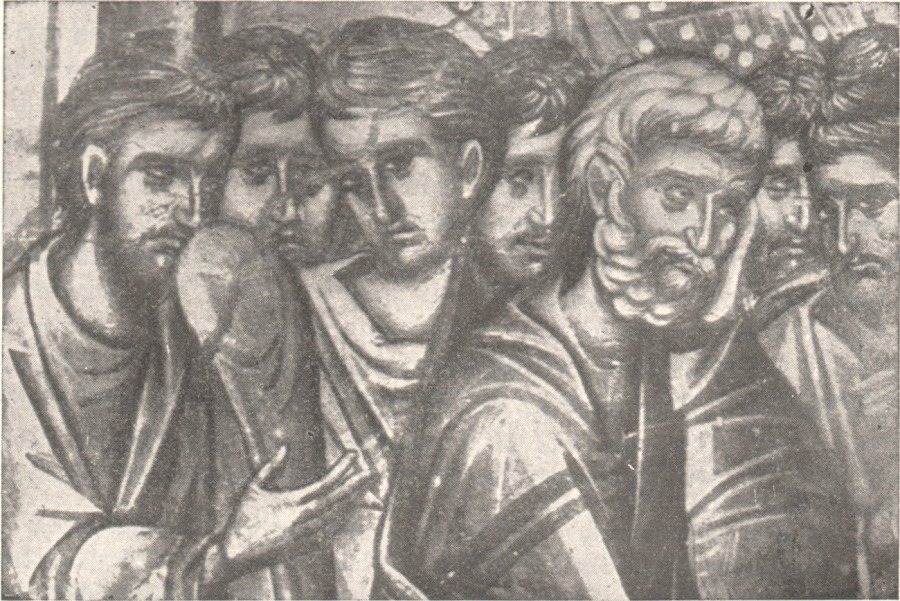
Fig. 60. Detail from the Dormilion of the Virgin. Work of the Macedonian School (early 14th century).
(A. Xyngopoulos, Οἱ τοιχογραϕίες τοῦ Ἁγίου Νικολάου Ὀρϕανοῦ Θεσσαλονίκης, Athens 1903, plate 19, fig. 35)
School of painting. Flourishing during the 13th and 14th centuries, the Macedonian School had drawn its inspiration from the art of late antiquity. Now it began to give way to a school of painting which based itself on the traditionally austere Byzantine style and was to prevail throughout the period of Turkish rule. This more rigorous style of painting was doubtless better matched to the sternness of the times that the Greek race was living through, and echoed the mystical call to repentance and spiritual purgation which had spread throughout the Greek
178
![]()
Christian world [1]. After the fall of Constantinople, the Macedonian School declined further and was eventually to disappear entirely. But this is hardly surprising, since the conditions which were necessary for its existence and which had obtained in Byzantine times, were to be found no longer. It lost its fundamental characteristics and finished up by becoming almost folk-art.
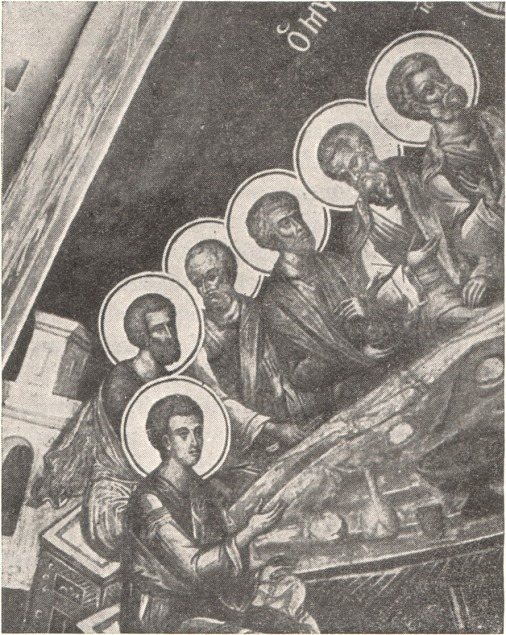
Fig. 61. Detail from the Last Supper in the refectory of Lavra, showing the Apostles seated on the left of Christ. An example of the Cretan School.
(Photo K. Kalokyris)
The most important style of painting in vogue after the fall of Constantinople was the so-called 'Cretan School'. This had made its appearance towards the end of the 13th century, originating in Constantinople and drawing its inspiration principally from the conservat-
1. Vacalopoulos, Ἱστορία, 2, p. 139, where there is also bibliography.
179
![]()
ive ideology of the monks and the opponents of East-West union, who faithfully adhered to the old forms of Orthodox painting.
From Constantinople the 'Cretan' style of painting spread to the great cultural centres of Thessalonica and Mystra, cities which had close cultural and political ties between each other. In the Perivleptos at Mystra we can see one of the school's finest works, painted in the last quarter of the 14th century; and we can discern its development in the Pantanassa of Mystra. From Thessalonica the style was to spread later into the interior of Macedonia and to the Balkan countries further north. After the Fall this school of painting continued its development and assumed its final form in Crete towards the 16th century; hence it retains — quite justly — the name of the 'Cretan School', an appellation assigned it by modern art-historians.
At this point mention might be made of two great Cretan painters of the 16th century, Theophanes and Damaskenos. The former perfected the art of fresco-painting, while the latter brought to its final form the art of portable icons. Well-known frescoes of Theophanes to be seen in Macedonia include those in the 'catholicon' of the Grand Lavra on Mount Athos (executed in 1535 and generally considered his most representative work); the fresco in the refectory of the same monastery (a work whose precise origin is in dispute; see fig. 61); and frescoes in the 'catholikon' of the monastery of Stavronikita (1546). Theophanes drew his inspiration from the motifs of the Palaeologi period, which he saw on the Holy Mountain, and in particular the exquisite frescoes of Manuel Panselenos (beginning of the 14th century) in the church of the Protaton at Karyés.
The archives of the monastery of Lavra have recently revealed some interesting historical details about Theophanes and his two sons, Symeon and Neophytos. We find, for example, that Theophanes went before the Holy Congregation in 1536, 1540, 1541 and 1544, and purchased property which was to be his for the duration of his life. This, we read, was for "three brotherhoods (ἀδελϕάτα): for [himself and] his two sons, Sires Symeon and Niphos". In 1552, ("Dikaeos being then the Protos") "Sire Neophytos, the son of Sire Theophanes the painter" was at work in the monastery of Lavra, and the monastery agreed that he might hold a monastic property (νὰ ἔχῃ ἕνα ἀδελϕάτον) and should "receive a corn ration according to the regulations".
Besides Theophanes, there were other renowned artists at work at various times on the Holy Mountain. The Cretan, Zorzes, for example, decorated the 'catholikon' of the monastery of Dionysiou; Makarios
180
![]()
painted frescoes in the chapel of the Mother of God in the monastery of Ayiou Dionysiou (1615); but perhaps the most important was Frangos Catelanos of Thebes, who adorned the chapel of St. Nicholas of Lavra in 1560. To him, also, must be attributed the anonymous painting of the church of the monastery of Barlaam at Metéora, executed in 1548. Catelanos does not adhere to such frugality of detail as Theophanes, but paints his scenes in full detail, many of his characteristic features — especially in his large compositions — being borrowed from Italian art [1]. These three painters, Zorzes, Makarios and Catelanos, did not follow faithfully in the footsteps of Theophanes as others did, but endeavoured rather to free themselves from his influence.
Athos was, indeed, an important centre of painting during the period of Turkish rule, and the influences it exerted far and wide — during the first centuries at least — are perceptible in Serbia and present-day Yugoslav Macedonia. In fact, just as we observed in the previous centuries, Greeks painters who had worked on Athos, at Kastoriá and elsewhere in the 16th century, adorned churches in the neighbourhood of Prilep and Studenica in 1568, as well as in the monastery of Krušedol at Fruška Gora. The teachers of the famous Serbian painters were also Greek; for instance, those of Georgije Mitrofanović, who decorated the refectory of Chilandariou in 1621, and of the priest Danilo, who painted the frescoes of the chapel of St. Nicholas in the same monastery in 1664, and of numerous other painters besides.
While the foundation of the Patriarchate of Peć in 1557 ushered in a brilliant period of Serbian painting, "the post-Byzantine icon-painting", writes Djurić, "which permeated by various routes Serbian culture during the Turkocracy, holds a very special and important place in the history of the art of the Serbs and the other Yugoslav peoples".
Greek painting owed the commanding position it enjoyed at this period not to the splendour of the great Byzantine tradition alone, but also to the rejuvenation of that tradition during the first centuries of Turkish occupation; and it is for this reason that it exercised a dominant influence not only in Serbia but throughout the other countries of the Balkan Peninsula. Indeed, the prototypes of Greek iconography were carried even further north to the Orthodox empire of Russia [2].
1. Vacalopoulos, Ἱστορία, 2, pp. 212-214, where the relevant bibliography may be found.
2. Vacalopoulos, ibid., 2, pp. 218-219, where the relevant bibliography is to be found.
181
![]()
All in all, throughout the period of Turkish occupation the Holy Mountain was, as Georgirenes, Bishop of Samos, has rightly observed, "the Great Academy of Orthodox monasticism" [1]. It was, in other words, a symbol or a conception rather than a school. The services which the monks of Athos rendered to Orthodoxy were considerable. For all their lack of education, their excessive religiosity, and the extortionist activities they may have been guilty of during their peregrinations, it was these monks above all others who, by their ardent and unswerving preaching, encouraged the Orthodox to stand by their faith and not abandon itin favour of Islam or Roman Catholicism. To be sure, the Catholic priests of the Cyclades recognised that one of the chief factors working against efforts to proselytize the inhabitants, was the activity of the monks of Athos, who toured the islands the first Sunday before Lent, hearing the confessions of the island peasants, administering Holy Communion, and at the same time condemning the Pope and the Catholic Church [2]. They thus converted into fanatical adherents of Orthodoxy the very same people who had been so open to Roman Catholic propaganda.
1. See Georgirenes, Description, at the end of his letter to the unknown correspon-dent. According to Belon (Observations, p. 36b), the Holy Mountain is for the Orthodox what Rome is for the Latins.
2. See P. Sauger, Ἡ παροῦσα κατάστασις τῶν νήσων τοῦ Αἰγαίον Πελάγους, translated by Alexander Karalis, Hermopolis, Syra 1878, pp. 8-9, who criticizes them for being illiterate, audacious and money-loving: "The main reason for their travels", he writes, "is the exorbitant contributions they demand for the mystery of the confession and of their rhetoric against the Latins…".